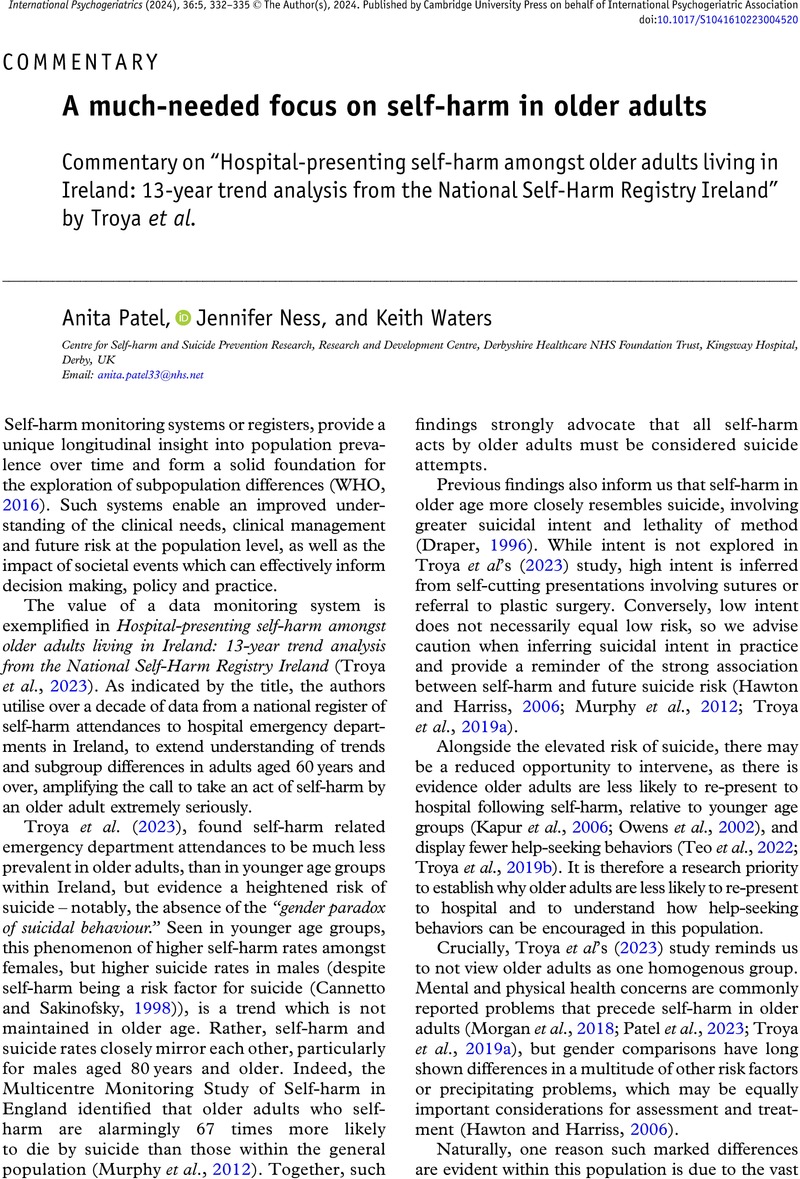No CrossRef data available.
Commentary on “Hospital-presenting self-harm amongst older adults living in Ireland: 13-year trend analysis from the National Self-Harm Registry Ireland” by Troya et al.
Published online by Cambridge University Press: 22 April 2024
